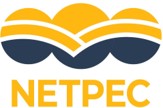Development of final disposal concepts for CO2
Negative Emission Technologies based on Photoelectrochemical Methods – Development of final disposal concepts for CO2 bound in fluid and solid phases in geological formations and initial assessment of geomechanical as well as hydrogeochemical interactions between host rock and the repository products.
The multidisciplinary NETPEC project is developing photoelectrochemical approaches for efficient technologies to extract carbon dioxide from the atmosphere. The resulting carbon-rich product, whether liquid or solid, should enable safe long-term storage. Thus, a much wider range of geologic emplacements can be considered for long-term storage, compared to previous approaches of directly storing CO2 in gaseous or liquefied form underground. For this purpose, it is necessary to investigate a qualitative and quantitative survey of possible storage scenarios. Based on this, an initial assessment of the geomechanical and geochemical interactions between the storage product and the geological emplacement areas will be performed.

After the determination of the criteria for a data base, in which the characteristic values of potential geological emplacement areas can be seized qualitatively and quantitatively, this data base for the region Germany is provided. The focus is mainly on geological areas that have already been used anthropogenically, such as former reservoirs and mines of underground but also of surface use. Based on this, generalized emplacement scenarios are identified depending on the emplacement product and the geological formations. In order to estimate an initial assessment of the geomechanical interactions between the emplacement products and the storage complex, geomechanical-numerical models are created, which investigate in a generalized way the interaction of the classified emplacement concepts in their geological framework with the emplacement product. This is complemented by an initial assessment of potential dissolution and transport pathways based on hydrogeochemical models.
Currently, there are three possible options as a sink product resulting from the process: graphite, oxalate also in solid form, and oxalic acid, which is dissolved in a solvent, in liquid form. For these three options, there are different possibilities for long-term safe final disposal or even for further use (Fig 1).





